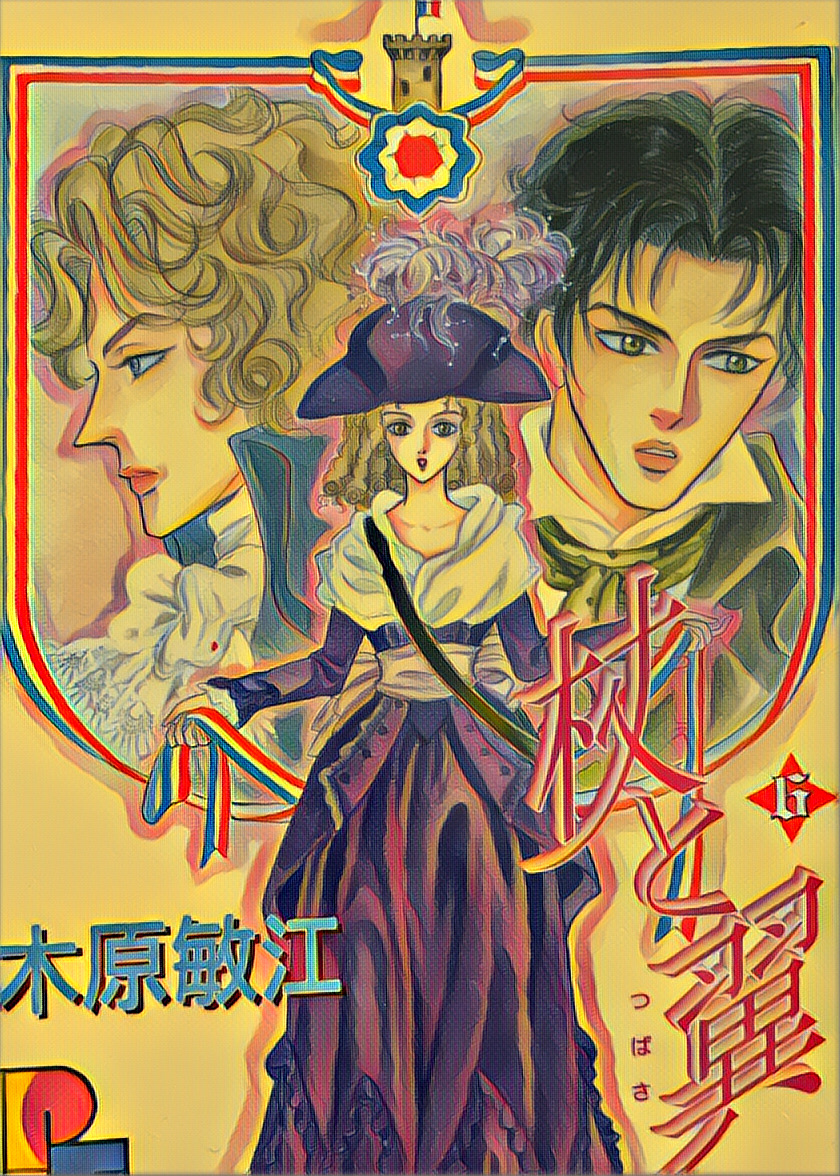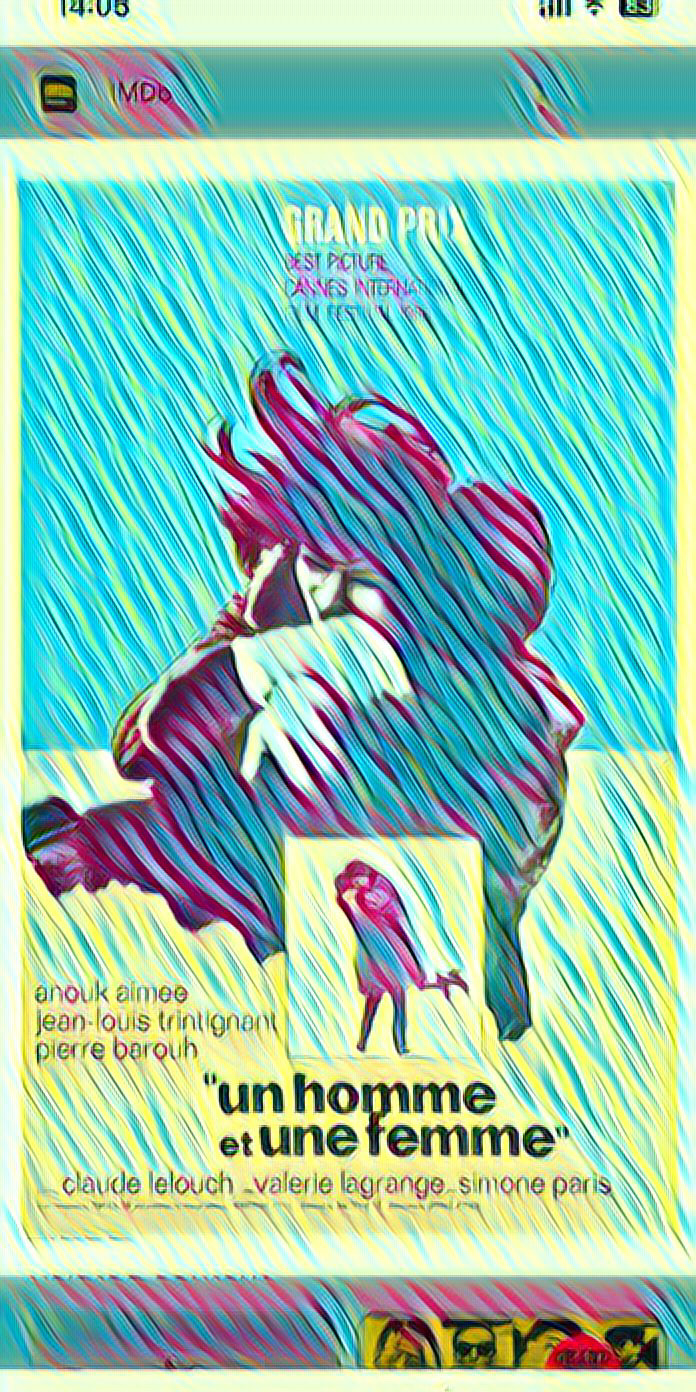Yoshimi Uchida’s “Sō Labyrinth / Sō Space” : 10
Posh’s “Movie and Manga Reviews for Travel, Music, and Art Enthusiasts”. I primarily focus on timeless classics from the past that remain relevant today.
For my fifth manga review, I introduce Yoshimi Uchida‘s “Sō Labyrinth / Sō Space”, which suggests the universal science fiction theme that “robots can develop emotions based on the folklore that dolls possess souls”.
“Sō Labyrinth /Sō Space” Overview
“Sō Labyrinth / Sō Space” is a fantasy manga by Yoshimi Uchida. In her early work “Pianissimo at the End of Autumn,” Uchida already explored themes of young girls’ growth, delving into the protagonist’s inner world, using beautiful shojo manga-style illustrations reminiscent of her mentor Yukari Ichijo, set in a high school backdrop.
“Sou Labyrinth / Sou Space” is considered one of Uchida’s later masterpieces, alongside “Liddell of Star Clock .” Compared to the more complex “Liddell,” this work has a brighter atmosphere with stronger comedic elements. “Sō Space” is a sequel to “Sō Labyrinth,” and both are published together in a single deluxe volume. Readers can also enjoy Uchida’s beautiful illustrations, influenced by the Pre-Raphaelite movement, reflecting her fine arts background. BTW, the title “Sō Labyrinth” means the main character named Sō is confused and lost about the existence of the doll with human soul. Grass Labyrinth was a mistaken title due to the sou means glass in Chinese Character,
The belief that dolls can possess souls is not unique to Japan but is found worldwide. In the relatively young United States, Voodoo has been sensationalized, with Hollywood portraying voodoo dolls as tools for curses. This practice of sticking pins into dolls for cursing purposes is remarkably similar to the Ushi no Toki Mairi ritual, said to have originated at Kibune Shrine in Kyoto, Japan. As a result, even in Japan, old dolls have acquired a frightening image. I recalls an experience of returning the doll passed down at the Outer Shrine of Ise where my ancestors are the priests due to fear.
The dolls appearing in “Sō Labyrinth / Sō Space” seem to be Ichimatsu dolls, a type of dress-up doll. The manga includes scenes where these dolls are dressed up and become beautiful. According to the Chunichi Shimbun website, some of these dolls were even said to have growing hair.
However, not all soul-inhabited dolls are associated with black magic. As popularized by works like “Harry Potter,” there are also benevolent forms of white magic involving dolls. According to the attached English site, in Celtic cultures such as Scotland and Wales, dolls are used for healing purposes.
A spoiler-free summary of the early story of “Sō Labyrinth /
Sō Space”
According to the prologue before the title page, Sō lived with a cat as a child and thought he was a cat himself, experiencing shock when he learned he was human.
“Sou Labyrinth” begins with college student Sou hearing an abandoned cat’s voice on his way home. Despite trying to ignore it due to his landlord’s dislike of cats, Sō trips and falls. Instead of a cat, he finds a young girl with a bob haircut. Accused of being heartless, Sō takes the girl, who calls herself Neko (“cat”), home.
The next day, Sō returns from university to find Neko waiting on the porch in the dark. Attracted to Neko, Sō teaches her about goldfish and shares dried sardines. Neko reveals she was previously with someone called “Boss,” who left her saying she could be picked up by someone else because she was still pretty despite being dirty.
The following day, Sō s best friend Tokifuru brings Akemi and others to cheer up the depressed Sou. Sou hastily hides Neko in a closet, but she’s discovered. The friends describe Neko as a “large, tattered doll that looks like a girl.”
Neko remains doll-like in front of the friends but resumes talking with Sō after they leave. The next day, Sō returns to find the goldfish dead. Unable to understand death, Neko asks if it’s sleeping. Sō explains about burying the fish and the concept of the body returning to the earth while the soul goes to heaven.
When Neko asks about the soul, Sō struggles to explain, describing it as “heart” or “spirit.” Neko recalls Boss telling her she was a rare doll with a heart, explaining that her ability to dream and like Boss was because of this heart. When Sō asks about Boss’s identity, Neko describes him as a knowledgeable stray cat with about 30 underlings…..
My review of “Sō Labyrinth /Sō Space”
The 17th-century French philosopher Descartes, known for “I think, therefore I am,” is often taught in high school history without delving into his “substance dualism.” This philosophy posits that the world consists of physical entities (body and matter) and mental entities (soul and spirit). Christianity distinguishes between the body, the spirit (mind, consciousness) that acts upon it, and the immutable soul, in line with the Trinity doctrine. The spirit is seen as the sole means of communicating with God, with life comprising body and spirit. The soul, associated with consciousness and emotions, belongs to God and, unlike the body, cannot be destroyed.
The distinction between spirit and soul is complex and debatable, leading to the acceptance of Descartes’ dualism. “Sō Labyrinth / Sō Space” explores whether a bodiless doll can possess a human-like mind, a familiar question for sci-fi fans reminiscent of “2001: A Space Odyssey” or “Blade Runner.”
In the manga, Neko’s ability to converse with Boss began due to rain. Feeling warmth from Boss’s care sparked emotions in Neko. As Neko evolves, she begins to respond with “thank you” when Akemi dresses her up. While others assume ventriloquism, the fact that humans besides Sō recognize Neko’s speech elevates this work beyond the typical “protagonist is mentally unstable” trope, contributing to its masterpiece status.
Sō is moved by watching her senior’s animation work, where paper cutouts of mermaids come to life. The senior’s words about paper absorbing emotions and living beautifully through invested feelings leave Sō speechless.
Neko, resembling a photo of 3-year-old Akemi, couldn’t distinguish between 19-year-old Akemi and her childhood photo. Learning they were the same person gave Neko a significant goal.
The concept of dualism also appears in Wakako Mizuki’s award-winning “Legend” (1981), describing humans as dual entities of body and spirit. “Sō Labyrinth” was also published in 1981, suggesting this was a popular topic then. The idea of souls inhabiting animals or objects after 99 years, known as “Tsukumogami,” has existed in Japanese folklore since the Heian period. You can see the parade of Tsukumogami by the magic of racoon at Pompoko of Studio Ghibli film.
What was once a fantasy in Yoshimi Uchida’s writing no longer seems far-fetched. With advancements in generative AI, it might become possible to create a robot or android “Neko” with the same voice, personality, and appearance as 19-year-old Akemi. While potentially unsettling, it remains a heartwarming sci-fi fantasy. It can also be enjoyed as a romance story, making it a must-read for shojo manga fans.
松田遼司の「旅行・音楽・美術好きのための映画・漫画評論」。現代でも通用する過去の名作を中心にお届けします。
漫画評論の第5回目は、「人形は魂を持つという言い伝えを元にロボットにも感情が生まれる」というSF作品の普遍的テーマを示唆している内田善美『草迷宮・草空間』を紹介します。
『草迷宮・草空間』の概要
『草迷宮・草空間』は、内田善美氏によるファンタジー漫画です。内田善美は初期の作品である『秋のおわりのピアニシモ』では師匠の一条ゆかり氏ゆずりの少女漫画風の美しい画像と高校を舞台にした設定の中で、すでに少女の成長というテーマで主人公の内面に切り込んだ作品を描いていました。この『草迷宮・草空間』は『星の時計のLiddell』と並ぶ後期の代表作ですが、難解な『星の時計のLiddell』と比較すると「コメディ色が強い明るい雰囲気の作品」となっています。『草迷宮』の続編が『草空間』で単行本は2つの作品を収録した豪華本のみとなっています。ラファエル前派に影響を受けた美大出身の内田善美の美しいイラストも堪能できるので『イティハーサ』同様に豪華本で良かったと思われます。
「人形には魂が宿る」というという言い伝えは日本に限った話ではなく、世界中に見られます。歴史の浅い米国ではブードゥー教がキワモノ扱いされ、ハリウッドによりブードゥー人形には呪いの道具としてのイメージが植え付けられました。このブードゥー人形に針を打って呪うという方法は、まさに日本の京都の貴船神社で始まったとされる丑の刻参りとそっくりです。その影響で日本でも古い人形には怖いというイメージができています。筆者も伊勢外宮に伝わる人形がなにか恐ろしくて両親に返却してしまったという経験があります。『草迷宮・草空間』に登場する人形は市松人形という着せ替え人形のようですが、作中には着せ替えしてもらい綺麗になるというシーンも登場します。中日新聞のサイトによると髪の毛が伸びるというものもあったそうです。
しかし魂の宿る人形には上記のような黒魔術的なものの他に『ハリー・ポッター』などで知られるようになった白魔術的な善いものもあるようです。添付英語サイトによるとイギリスのスコットランドやウェールズのようなケルト文化ではヒーリングに使用しているようです。
『草迷宮・草空間』のネタバレなしの途中までのストーリー
タイトルページの前のプロローグによると子供の頃に猫と一緒に暮らし自分が猫だと思っており人間と知ったときにショックを受けたという草。『草迷宮』は、大学生になった草が帰り道に捨て猫の声を聞くシーンから始まります。猫嫌いの大家さんがいるので聞こえないふりをして通り過ぎようとした大学生草は、足をかけられて転んでしまいます。眼の前にいたのは猫ではなくおかっぱ頭の少女でした。自分を見捨てる薄情者と言われた草はねこと名乗る少女を家に連れて帰ります。翌日大学にでかけた草は夜に帰ってくると明かりもつけずに縁側で待っていたねこに惹かれます。金魚を知らないというねこに「これは金魚だ」と教え、食事をしていないというねことみりん干しを食べるのでした。草に拾わえる前はボスと一緒だったというねこは「汚れていてもまだまだべっぴんだから誰かに拾ってもらえ」という言葉を残して去っていったボスと別れてから一人だったのです。
翌日落ち込んでいる草を励ますために親友の時雨が草が好きなあけみちゃんたちを連れて突然家におしけけてきます。ねこを押入れに急いで隠した草でしたが、着物のたもとが出ていてねこが見つかってしまいます。友人たちは「ボロボロの大きな人形!女の子みたい」というのでした。
ねこは友人たちの前では人形のままでしたが、彼等が帰るとまた草と話し始めるのでした。翌日大学から帰ると金魚が死んでいました。「ねんね?」と死を理解できないねこに草は「金魚を土に埋めると肉体は土に帰り魂は天に帰る」と説明します。「魂ってな〜に?」と聞くねこに草は「こころ、精神?難しいことはきくな」と答えるのでした。ねこはボスから「お前はこころを持った珍しい人形だ、夢を見たりボスを好きなのはこころがあるからだ」と語るのでした。「ボスはすごい知識人だな、何者だ?」と尋ねる草にねこは「子分が30匹はいるノラネコだって」と答えるのでした….
『草迷宮・草空間』を読んでの感想
高校の歴史の教科書に出てくる17世紀フランスの哲学者デカルト。「我思う故に我あり」という言葉と共に記憶させられるだけで「実体二元論」については習っていません。世界には肉体や物質という物理的存在と別に魂や精神という心的存在があるというものです。キリスト教では三位一体説と合わせて肉体とそれに働きかける精神(心、意識)と不滅の変えることができる魂とを区別しているようです。精神は神と通じあえる唯一の手段で生活は肉体と精神で成り立っているそうです。魂は意識や感情で神に属しており、肉体と異なり誰も滅することができないそうです。
この精神と魂の区別は難しく異論もあるはずなので、デカルトのような二元論に落ち着いているのでしょう。この『草迷宮・草空間』で描かれているのも肉体を持たない人形が人間と同じ心を持つことができるのかという命題です。『2001年宇宙の旅』や『ブレードランナー』などSFファンにはおなじみの疑問点でしょう。
『草迷宮・草空間』でねこがボスと話をするようになったのは雨のせいでした。「寒いだろう?」という声が聞こえて「誰?」と聞くとボスでなめたり体を寄せて暖めてくれるとあたたかい気持ちが生まれたそうです。その後ねこは進化していき、あけみちゃんに着せ替えしてもらうと「ありがとう」と答えるようになります。みなは腹話術と思ったようですが草以外の人間もねこが喋るのを認識したわけで「草は精神がイカれていた」というよくあるパターンになっていないところが名作と呼ばれるゆえんなのでしょう。ねこと同じように自然とあたたかい気持ちになってきます。
アニメの作画のバイトを手伝っている先輩の家で、草は作品を観せてもらいます。自分が切り取った紙切れの人魚姫が動く姿に感動します。「紙っ切れだからこちらの想いのたけの分だけ吸い取ってくれる、想いをこめるだけきれいに生きてくれる」という先輩の台詞に言葉を失います。
3歳のときのあけみちゃんの写真に写った姿にそっくりだったねこは、19歳になったあけみちゃんと3歳の写真のあけみちゃんとの区別がつきませんでした。二人のあけみちゃんが同じ人物だと知るとねこには大きな目標ができたのでした。
肉体と精神は別という『二元論』は81年星雲賞受賞の水樹和佳子先生の『伝説』にも人類は肉体と精神の二元合一体だという表現で登場します。『草迷宮』は81年発表なので当時はこうした議論が流行っていたのでしょうか?いずれにしろ人間しか持ち合わせていないとされている魂が「九十九」(つくも)という長い年月を経ると狐狸のような動物や人形などの道具にも宿るようにになるという考え方は付喪神として『伊勢物語』や『今昔物語』にも登場するなど平安時代から日本には存在していたようです。スタジオジブリの名作映画「平成狸合戦ぽんぽこ」では狸達の秘術による付喪神のパレードが楽しめます。個人的には動物はもちろん植物にも精神が存在すると思えるので違和感なくこの現代のお伽噺に溶け込めました。
内田善美先生の執筆時には夢物語だったこの『草迷宮・草空間』も現在読んでみるとそうとは思えません。生成AIの進歩で19歳のあけみちゃんと同じ声や性格を見た目も同じロボットやアンドロイドの「ねこ」に埋め込むことも可能になるかもしれません。実は怖い話なのかもしれませんが、心があたたまるSFファンタジー作品といえるでしょう。恋愛作品としても読んでも楽しめるでしょう。「少女漫画ファン必読の作品」といえるでしょう。





